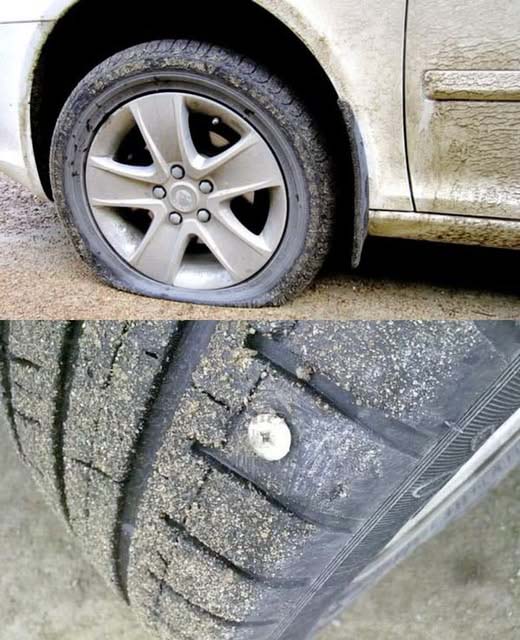ADVERTISEMENT
Certainly! Here’s an informative article on How to React in the Event of a Puncture on the Highway:
🚗 How to React in the Event of a Puncture on the Highway
Stay calm, stay safe—essential steps for handling a tire puncture when you’re on the road.
Getting a puncture while driving on the highway can be stressful, but knowing how to react in such an emergency situation can help you stay calm and safe. Whether you’re dealing with a flat tire or a slow leak, the key to handling a puncture is taking the right steps quickly and efficiently. Here’s a comprehensive guide on how to react if you experience a puncture while driving on the highway.
🛑 1. Stay Calm and Keep Control
Your first reaction is crucial. Panic can lead to poor decisions, so stay calm and focused. Here’s what to do:
- Don’t Slam on the Brakes: If you feel a tire lose pressure, don’t brake suddenly. Slamming the brakes could cause your vehicle to lose control, especially if it’s a front or rear tire.
- Gradually Slow Down: Slowly ease off the gas pedal, and gently steer your car to a safe spot on the road, away from traffic.
- Signal Your Intentions: Turn on your hazard lights to alert other drivers that you’re in an emergency situation and that your vehicle is slowing down.
🏞️ 2. Move to the Shoulder or a Safe Area
Once you’ve regained control, move to the shoulder of the highway or the nearest safe area. Here’s how to ensure your safety:
- Choose a Safe Spot: If possible, drive to an exit or pull into a parking lot, or at least onto a wide, flat shoulder with enough space between your car and traffic. Avoid stopping on bridges, curves, or anywhere visibility is limited.
- Keep a Safe Distance from Traffic: Ensure your car is as far off the road as possible. The more distance between you and moving vehicles, the safer you’ll be.
🔧 3. Assess the Situation
Once you’re in a safe location, it’s time to assess the damage. Here’s how to proceed:
- Check for a Flat or Punctured Tire: Inspect the tire to determine if it’s flat or severely punctured. If you’re unsure about the extent of the damage, it’s best to check all four tires.
- Look for Debris: If the puncture is caused by an object like a nail, screw, or piece of glass, it’s best to leave it in place until you can either repair the tire or change it. Removing it prematurely could cause further damage.
- Check for Tire Pressure: If you’re unsure about the pressure, use a tire pressure gauge to verify if the tire is low or flat.
🚨 4. Decide Whether to Change the Tire or Call for Help
Depending on your skill level and the tools available, you have a couple of options:
Option 1: Change the Tire Yourself
If you’re comfortable changing the tire and have the necessary tools in your car, you can proceed with the following:
- Ensure You Have a Spare Tire: Double-check that you have a spare tire, a jack, and a lug wrench. If you don’t have these items, or if the damage seems too severe, it’s best to call for roadside assistance.
- Follow the Proper Tire-Changing Steps:
- Place the car in Park (or Neutral for manual transmissions) and engage the handbrake.
- Loosen the lug nuts slightly (don’t remove them completely yet) before lifting the car with the jack.
- Lift the vehicle until the flat tire is off the ground, then remove the lug nuts and the damaged tire.
- Mount the spare tire, hand-tighten the lug nuts, and lower the car back to the ground.
- Tighten the lug nuts securely in a star pattern to ensure even tightening.
Option 2: Call Roadside Assistance or a Tow Service
If you’re uncomfortable changing the tire, or if you don’t have a spare, calling for roadside assistance is your best bet. Many insurance policies offer this service, or you can use an emergency towing service. While waiting for help:
- Stay in the Car: If you’re on a busy highway, stay inside your vehicle with your seatbelt fastened until help arrives. It’s safer to remain in the car, especially if you’re on a busy, fast-moving road.
